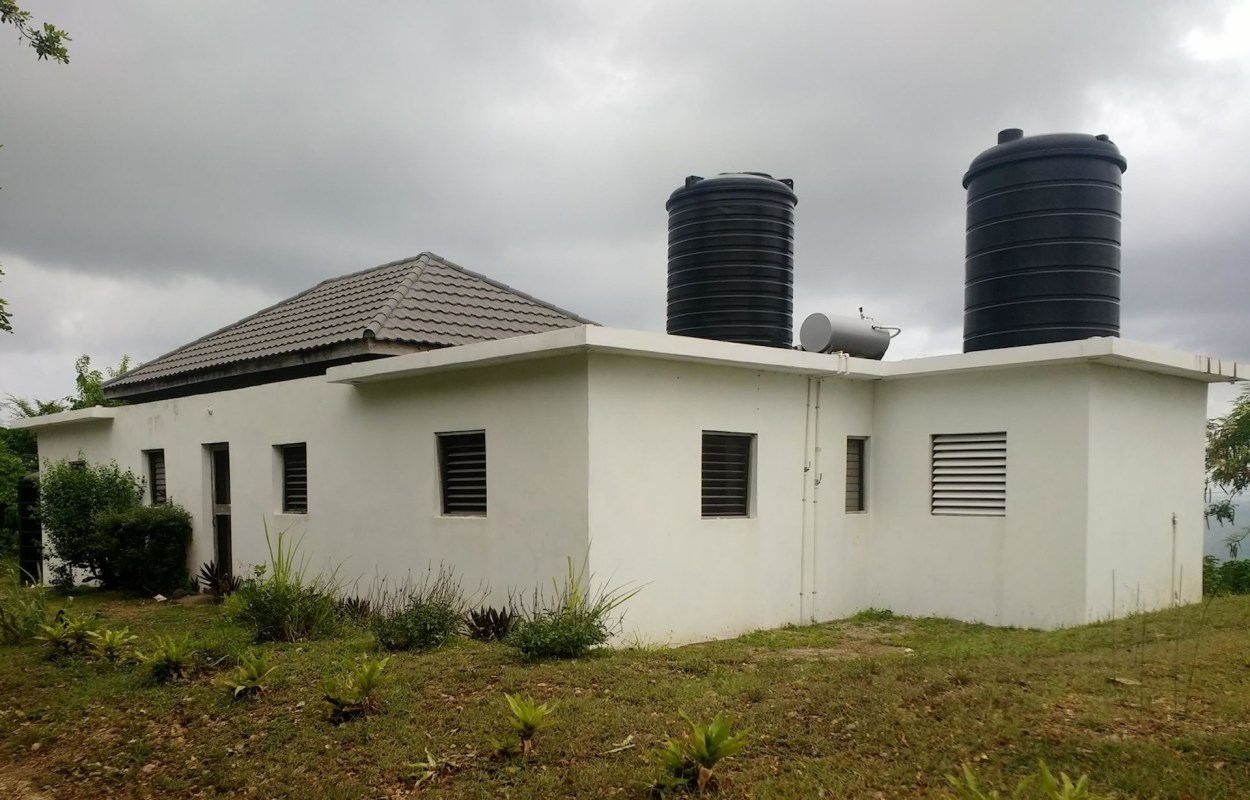A home in Johns Town, Jamaica, is setting an example for sustainable living.
It's part of a group of largely self-sufficient residences called The Source Farm Foundation and Ecovillage. The community in St. Thomas Parish, on the southeast corner of the island, is home to an extended family and friends, the Guardian reported.
Nicola Shirley-Phillips and her siblings were asked by their mother, Blondel Shirley-Atwater, who founded The Source in 2005, to move back home from the United States, and they were the first in the area to use solar energy, according to the Guardian. The homes are made of "earthbags" and use mostly renewable energy — getting 70% of their energy from solar and wind.
"Jamaica is very much a 'show me' place," Shirley-Phillips told the Guardian. "So people kept coming in our house to see how it worked, even professors. Then they were able to feel comfortable [with] it. When we started there was only two solar companies in Jamaica, and now the phonebook is full of them.
"... We live on a hill, so we can see when the rest of the parish has no power. When there's a hurricane, people come to us to charge their phones."
The home is resistant to fires, hurricanes, earthquakes, and insects and is "mostly water, bullet, and sound proof," The Jamaica Gleaner reported.
Earth is abundant, and it's super cheap compared to other building materials. The Gleaner noted it is easy to build with, energy-efficient, and nontoxic. It also keeps the interior of the house "very cool."
"The structure essentially employed the use of rice bags with local soil from the site (with additives), along with barbwire acting as a stabilising force, offering tensile strength," Barry Rattray wrote. "Earthen plaster was then applied to the exterior for a smooth, paintable white finish."
Similar homes are popping up everywhere as people grapple with rising temperatures. On Thursday, Copernicus, the European Union's climate monitoring mechanism, reported that the average global temperature over one year was 1.5 degrees Celsius higher than it was in preindustrial times for the first time.
In Anapoima, Columbia, an architecture firm built a house that doesn't require air conditioning, while in Austin, Texas, a family renovated their 1914 home into a nearly airtight and super-insulated "passive" residence.
Of course, these examples don't compare economically to earthbag construction, a method The Gleaner noted has been used "around the world for 10,000 years."
Join our free newsletter for weekly updates on the coolest innovations improving our lives and saving our planet.









